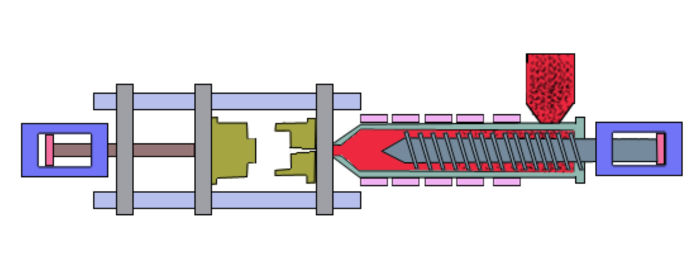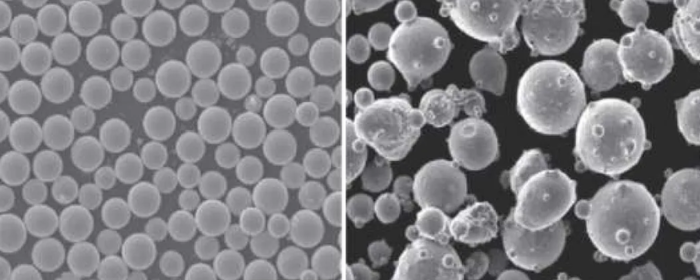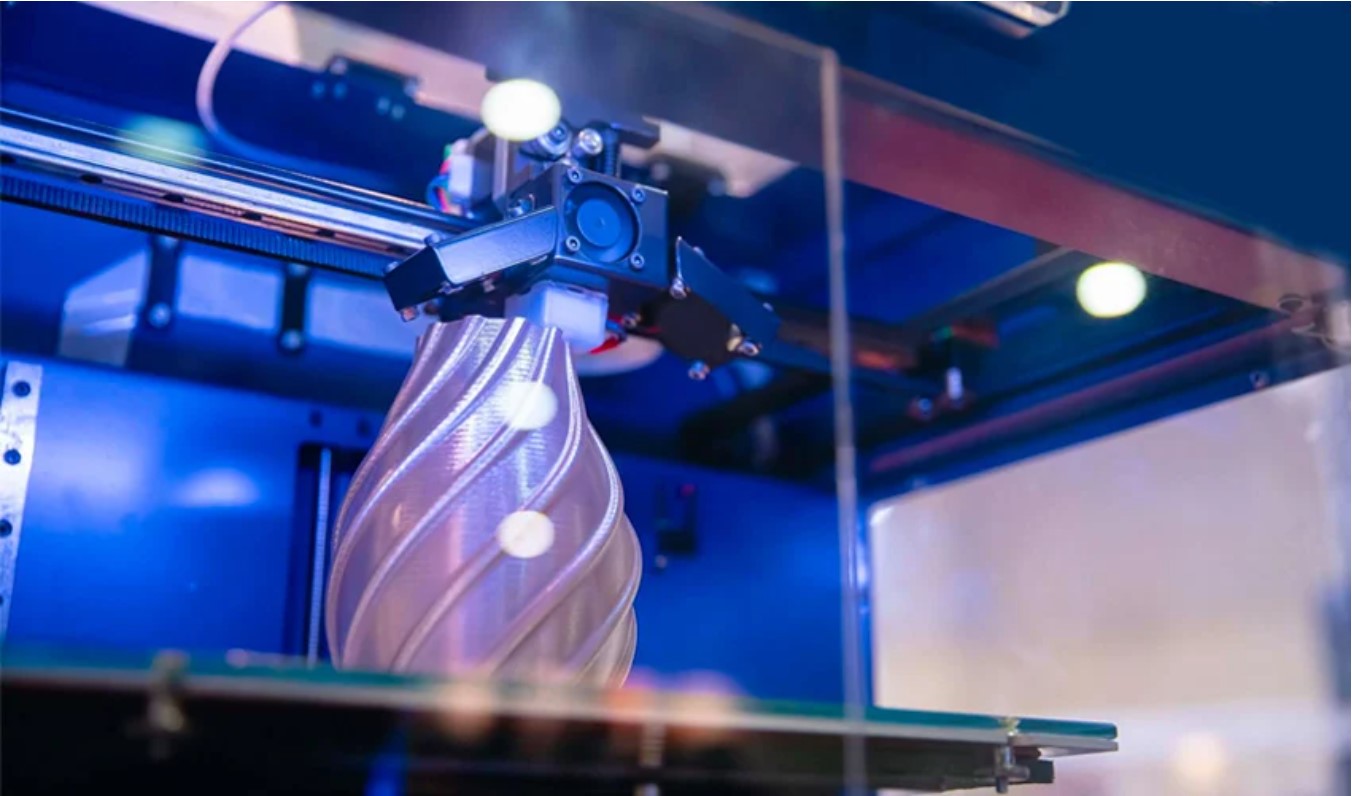

Compared with other forms of materials, powder materials have unique advantages in many aspects such as forming, utilization, and microstructure control. Furthermore, the actual manifestation of these advantages is closely related to the powder preparation process. Also, the preparation process directly impacts the particle size, purity, and quality of the powder. However, different preparation methods have their own advantages and limitations. This text will conduct a comparative analysis of powder preparation methods to help readers determine the preparation powder that best meets processing needs.
At present, a variety of metal powder preparation technologies have been developed, the most important ones are as follows:
Gas Atomization
This production method sprays molten metal through a high-speed air stream to form fine droplets, which cool in the air and solidify into spherical powder.
PREP throws out molten metal through high-speed rotating electrodes, and the droplets cool under the action of inertial force and form spherical powder.
This preparation process uses centrifugal force to disperse molten metal into fine droplets, which form a spherical powder after cooling in the air.
In this method, the precursors in the solution are chemically reacted to form a sol, which is then gelled and dried to obtain spherical powder.
The solution is sprayed into small droplets through a spray dryer, quickly frozen at low temperature, and then the solvent is removed by sublimation to obtain a spherical powder.
This method uses a high-speed ball mill to ball-mill the material to form spherical powder under the action of friction and impact.
This process uses a high-voltage electric field to spray liquid material into tiny droplets, which dry and solidify in a gas to form a spherical powder.
Each of the above methods has advantages and disadvantages, and which method to choose depends on the material properties, particle size distribution, purity requirements and application field of the required powder.
The Gas Atomization method can prepare powders with high sphericity and wide particle size distribution, which is suitable for large-scale production. Typical applications include aerospace parts and metal powders for additive manufacturing (3D printing).
Material properties: This method is suitable for most metal and alloy materials, such as steel, aluminum, titanium, etc.
Particle size distribution: Powder made by aerosolization method is usually 10-200 microns, with a wide particle size distribution. However, the particle size can be controlled by adjusting the gas flow rate and melting temperature during the preparation process.
Purity: The purity of the powder produced by this process is relatively high. In order to avoid the influence of gas impurities, operators can use high-purity argon, helium, and other inert gases.
Application fields: Widely used in powder metallurgy, 3D printing, spraying, electronic materials, and other fields.
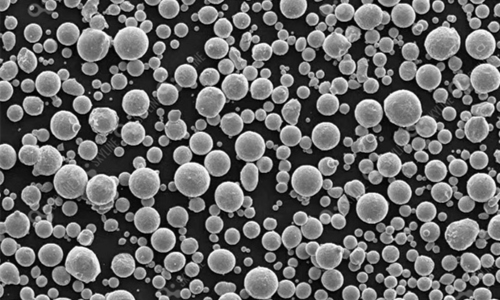
Fig. 1 Aerosolization Powder
PREP powder has high sphericity and purity, and is suitable for applications requiring high performance, but the cost is high.
Material properties: PREP powder is mainly used for refractory metals and high-temperature alloys, such as titanium alloys and nickel-based alloys.
Particle size distribution: The particle size of this process is generally 50-300 microns, with a narrow distribution.
Purity: The material produced is of extremely high purity with extremely low oxygen content. This is because production takes place in a vacuum or inert gas environment, so impurity levels are very low.
Application areas: High-end aerospace, 3D printing and high-performance parts manufacturing.
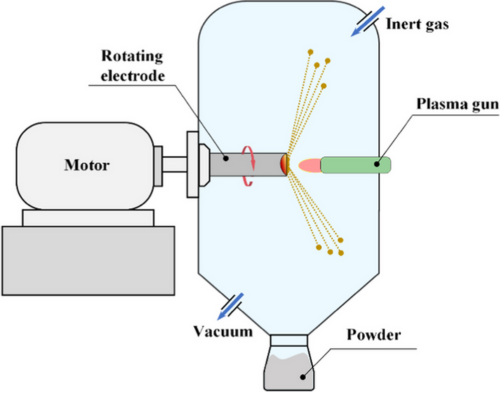
Fig. 2 Plasma-Rotating Electrode Processing[1]
This method has simple equipment and high production efficiency. It is suitable for producing larger particle size powder, but the particle size distribution is relatively wide.
Material properties: Suitable for metal and alloy materials, such as aluminum, copper, iron, etc.
Particle size distribution: The particle size is generally 50-500 microns, with a wide distribution.
Purity: Higher, but subject to process parameters. The introduction of impurities can be reduced by optimizing process parameters.
Application areas: Powder metallurgy, welding materials, spraying.

Fig. 3 Centrifugal Atomization[2]
The sol-gel method is suitable for preparing high-purity and uniform nanopowders, but the production cycle is long and the process is complex.
Material properties: This method is mainly used for ceramics, composite materials and inorganic materials, such as silica, alumina, barium titanate, etc.
Particle size distribution: The particle size of the powder can be controlled in the nanometer to micron range, with a narrow distribution.
Purity: The powder produced by the sol-gel method has higher purity, and high-purity powder can be obtained by controlling the reaction conditions.
Application fields: Electronic materials, catalysts, and pharmaceutical fields.
This method is suitable for heat-sensitive materials and can maintain the activity of the material, but the equipment and operating costs are high.
Material properties: Suitable for biological materials, medicine and heat-sensitive materials, such as enzymes, proteins, drugs, etc.
Particle size distribution: The particle size of the produced powder is usually 1-100 microns, with a narrow distribution.
Purity: This method is suitable for preparing high purity powders.
Application areas: Pharmaceuticals, food, cosmetics.
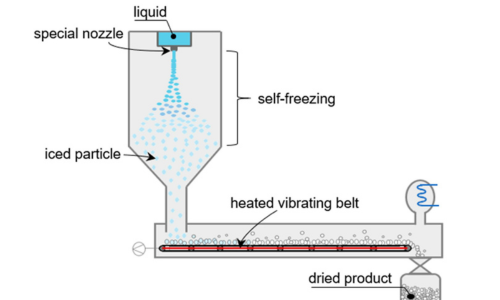
Fig. 4 Freeze Spray Drying[3]
This process has simple equipment and is suitable for small batch production, but the powder purity is low.
Material properties: Mechanical ball milling method is suitable for metals, ceramics and composite materials, such as iron powder, zirconia, tungsten carbide, etc.
Particle size distribution: The particle size of the produced powder can be controlled at the micron to nanometer level, with a wide distribution.
Purity: The powder produced by this process has low purity and is easy to introduce impurities. The introduction of impurities can be reduced by optimizing the ball milling medium and environment.
Application areas: Material preparation, powder metallurgy, composite materials.
The electrospray method is suitable for preparing nanopowders and composite powders, but the output is low and is suitable for laboratory and small-scale production.
Material properties: This method is mainly used for polymer materials, composite materials and biological materials, such as polymer solutions, protein solutions, etc.
Particle size distribution: Powder particle size is usually in the nanometer to micron range, with a narrow distribution.
Purity: The powder produced has high purity, but it is controlled by the purity of the solution.
Application areas: Nanomaterials, medicine, sensors.
Table 1. Comparison for Different Powder Preparation Methods
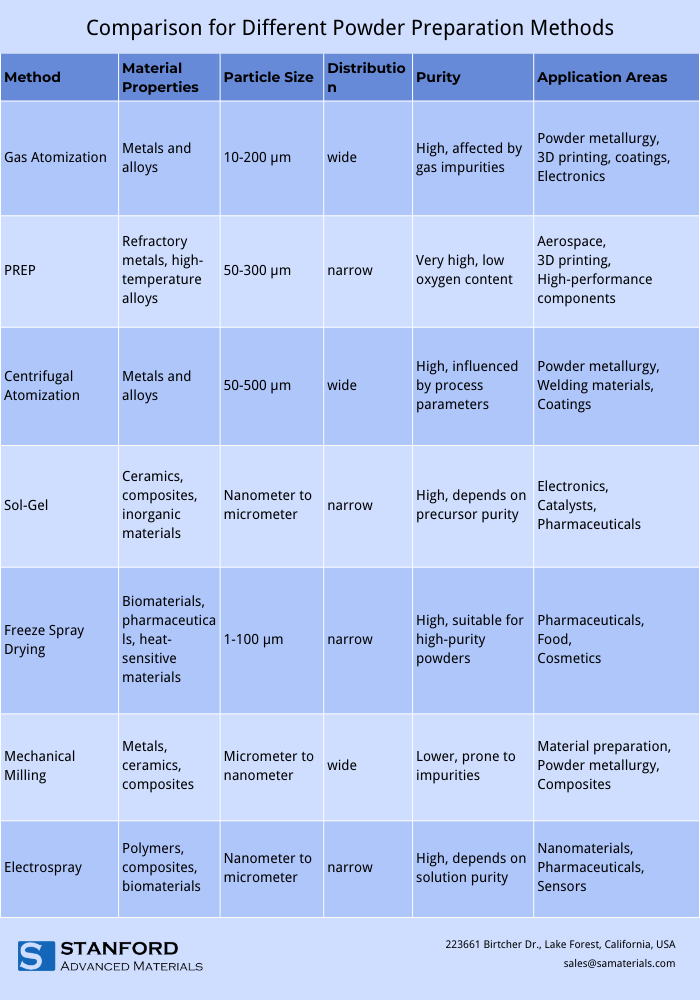
Table 1. shows the comparison of different powder preparation processes in terms of powder making materials, powder particle size, purity, and application.
Stanford Advanced Materials (SAM) is at the forefront of developing metal powders. Provide metal and alloy powders made by different preparation processes, such as Refractory Powder, Nickel Based Powder, Aluminum Based Powder, and High Entropy Alloy Powder. For more information or specific applications for these alloy powders, please feel free to get in touch and check out our homepage.
Powders produced by different preparation processes have different particle size distributions and purity, and the required materials and applicable fields are also different. Among them, the gas atomization method and the centrifugal atomization method are suitable for large-scale production and have been used in many industries. PREP can be made into high-performance materials with high sphericity and is widely used in high-end aerospace. Sol-gel process, mechanical milling and electrospray can all produce nanoscale materials. The freeze spray drying method is suitable for heat-sensitive materials and is mainly used in the cosmetics, pharmaceutical and food industries.
[1] Feng, Shuo & Jia, Dongzhou & Ying, Fu & Kong, Xiangqing & Lv, Zhenlin & Zeng, Erjun & Gao, Qi. (2023). Preparation of additive manufacturing powder by external field–enabled: a comparative assessment. The International Journal of Advanced Manufacturing Technology. 131. 1-27. 10.1007/s00170-023-12073-x.
[2] Akio Furusawa. (2017). Synthesis of Lead-Free Solder Particles Using High-Speed Centrifugal Atomization. Materials Transactions. https://doi.org/10.2320/matertrans.M2017129
[3] Merve B. Adali. (2020). Spray Freeze-Drying as a Solution to Continuous Manufacturing of Pharmaceutical Products in Bulk. Processes. https://doi.org/10.3390/pr8060709


